 Back to selection
Back to selection
Five Films that Influenced Alex Thompson’s Hospital Thriller, Rounding
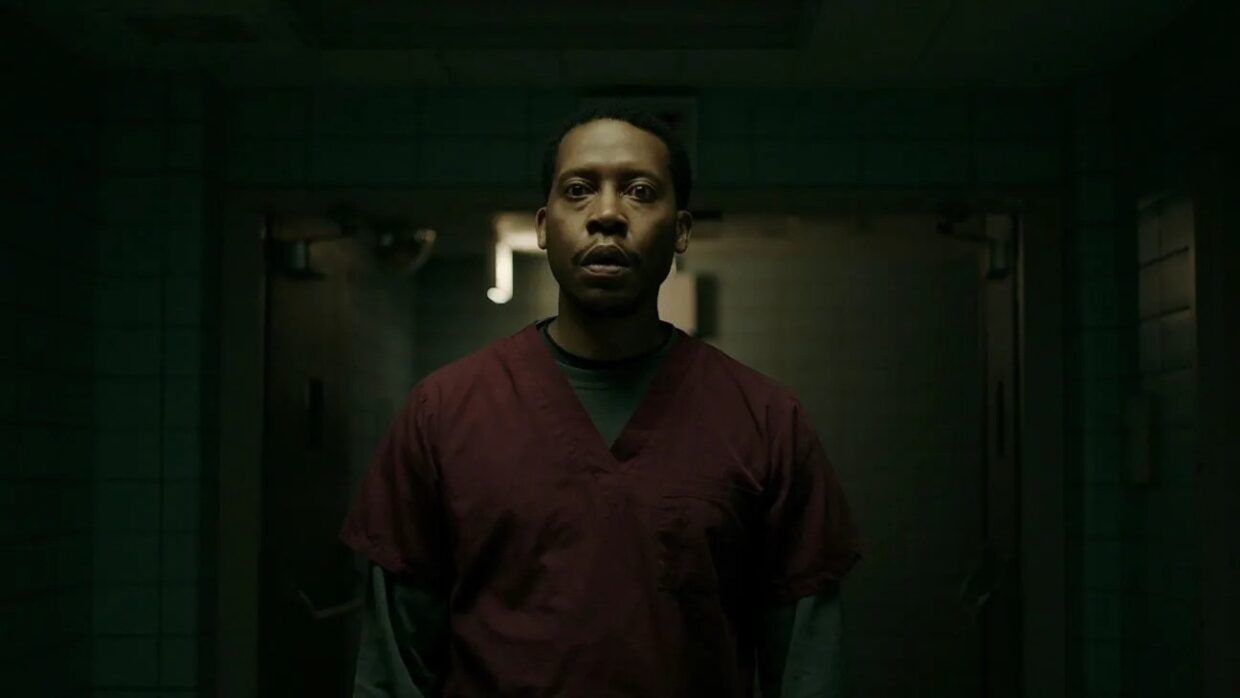 Rounding
Rounding Rounding, the new film from Alex Thompson, who directed Saint Frances and, with 25 New Face partner Kelly O’Sullivan, Ghostlight, is in theaters today from Doppelgänger Releasing. Below, Thompson discusses five of the cinematic influences upon his darkly anxious hospital-set thriller.
To say that Rounding is an experiment is an understatement. Borne in the backyard in Kentucky during the pre-vaccine days of the COVID-19 pandemic, Rounding was an attempt take the same team and ethos that made Saint Frances and apply it to a different genre and specificity. These are five films that influenced us along the way.
Bunny Lake Is Missing
Bunny Lake Is Missing isn’t anyone’s favorite Otto Preminger movie (that would probably be Anatomy of a Murder), but it does have an unexpectedly charismatic performance by the great Laurence Olivier as the investigating detective Supt Newhouse (what a name).
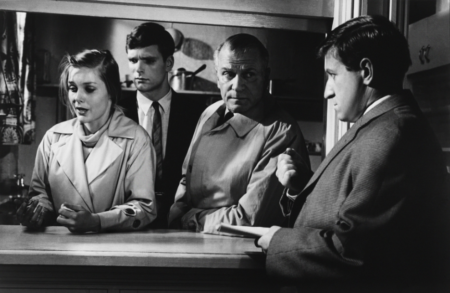
There is a particularly strange scene where Olivier interviews Carol Lynley in a noisy London pub, The Zombies blaring not one but two consecutive songs from the television set, the cash machine incomprehensibly ringing every few seconds. It is crass and experimental sound design, and totally bizarre. The viewer is left on edge and confused as to not just the narrative as presented, but the storyteller. It is a lot like a sound design equivalent to Scorsese’s famous use of close-ups in After Hours, just 20 years prior. What is going on with this scene?
His character is earnestly confused by the story at Bunny Lake’s center, but his tone and expression never falters. He keeps it admirably “together” throughout and became a model for my character, Dr. Emil Harrison, early in the writing process. Michael Potts can do anything Laurence Olivier can.
More than anything, Bunny Lake is unhinged and depraved in ways that feel appropriately chaotic. It has the same goofiness as Anatomy of a Murder, but far less effectively. So when it sings, it really belts, and when the notes hit right, they are transcendent.
Dial M for Murder
Another thriller that culminates, I think successfully, in a monologue by a detective summing it all up. The only genre trope I love more than a “Did I get that right?” “Not quite…” is “The gardener? Why he’s been dead for years!” And we get some of that in Rounding, as well.
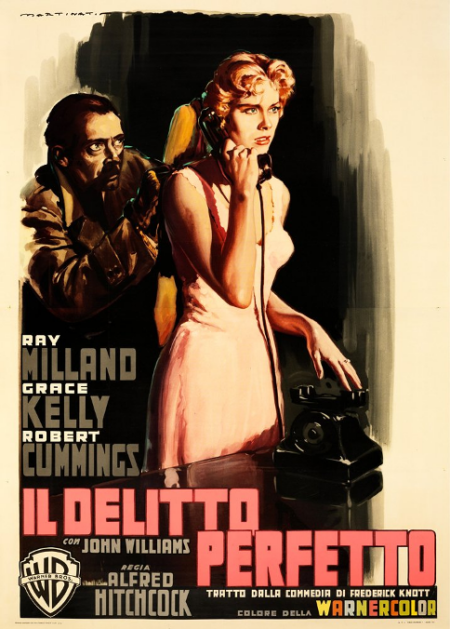
This is one of Hitchock’s most underappreciated films, in my opinion. Not much is underrated these days (my least favorite film in every great filmmakers’ ouevre has a think piece declaring it a masterpiece), but Dial M for Murder is smart and quiet and funny and succeeds in where it should fail. Grace Kelly is just active enough not to be passive; and if this were a more traditional film we’d have one “way in” as they say; the character I end up most intrigued by is the one who is dead by its halfway mark. His drawn face and giant eyes glimmering in the dark linger in a way that justify the brilliant and operatic Italian poster, whose proof is housed at Skywalker Ranch, where we finished our sound.
Vertigo
There is a great deal of following in Rounding, much of it before we can really be sure if James has anything to worry about. I looked to the notoriously long following scenes in Vertigo for inspiration, perhaps hewing too closely to Hitchcock. Unlike Scottie’s tail on Madeline, which end with a report to her husband, there is no one for James to relay his observations to, so it was important that Helen’s mother, Karen, catch him and shake up our understanding of the preceding scenes herself. It’s Karen who gets to say, “Helen? She’s been at PT all morning…” in a manner similar to Gavin Elster’s “Carlotta Valdes committed suicide when she was 26” and the concierge who confirms Madeleine hasn’t been to the hotel in some time.
Is Scottie following a ghost? Or is he losing his mind?
Sidney Flanigan’s Helen Adso also keeps a picture of Carlotta’s portrait from the Legion of Honor Museum in her notebook — a blink and you’ll miss it easter egg. She’s drawn sunglasses on it.
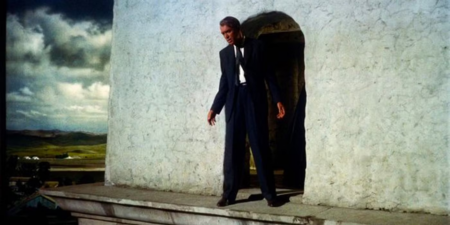
Vertigo also, of course, ends with a dolly or crane move, pulling out as Jimmy Stewart’s John Fergusen (“My friends call me Scottie”) stares into the abyss. I recently heard “I hear voices” in Aaron Schimberg’s A Different Man and the echo, from hundreds of viewings of Hitchock’s psychosexual masterpiece, sent a chill down my spine.
Personal Shopper
Perhaps my favorite contemporary ghost story, Olivier Assayas’ film is firmly rooted in “reality” but still takes the time to build out its mythos — either with a YouTube video about spiritualism Maureen (a never-better Kristen Stewart) watches on the train, or with the ghost’s unexpected use of her iPhone to communicate.
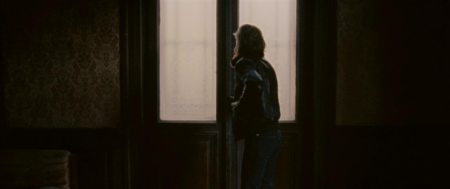
Assayas’ commitment to our world makes the uncanny and explicitly ghoulish occurrences in Personal Shopper all the more terrifying. I am always on edge while I watch. It is a bit like Sofia Coppola’s Somewhere, if it were haunted by Dakota Fanning instead of starring her. Assayas’s film, like Coppola’s, is a favorite of mine to rewatch, on every device possible. When I first saw it it was on my grandmother’s old television with the horrible sound settings turned on — dialogue enhancement, noise reduction. What I know now to be a careful and quiet mix was a wall of static and the loudest silence I have ever heard, as if the gain were simply turned up on the boom for entire scenes. Sometimes it is freeing to watch films in the “wrong” way first; as I remember watching The Sting on a damaged VHS and squinting to make out the human figures, I also recall that the story cut through the mess and I was in awe, like an archaeologist looking down into a dusty crypt.
Like Hitchock, Assayas is a keen operator and camera storyteller. He makes a more mechanical and locked off ghost than Soderbergh, with a camera that is firmly rooted to sticks or dolly track for much of the film, sliding just out of Maureen’s sight line. We similarly chose to ground the camera in Rounding, and to this day I look back at stills from Personal Shopper and think we could have gone 2.40:1, shown even more of the world and kept even further back from Namir, who commands a frame even in a wide shot.
Birth
No film was more heavily referenced for Rounding than Birth. It is a short story, in a way, and has the economy of one. It also feels haunted. There is an unknowability to it, even after the final “twist”. Harris Savides is one of my idols and has been an influence on DP Nate Hurtsellers’ work. The fact that we get no more Harris Savides films is something I think often about.

The score to Birth is unexpectedly nimble, despite its sense of attack within the edit. In some ways it is more akin to an extended prelude, and there are parts that remind me, in ways both obvious and not, of Bernard Herrman’s Vertigo score and John Williams’ “Scherzo “for Indiana Jones. We temped the whole film, nearly, to Alexandre Desplat’s humming, hopeful, and ultimately winkingly dramatic score for Jonathan Glazer’s film.
We also have a running scene lifted straight off the screen, though half the length and with a jump cut in the middle, and a cemetery sequence in the snow. His cemetery, like ours, looks like it belongs in a movie. It is a film that is specific and yet very aware of visual shorthand. Its characters are Chekhovian, unknowable and immediately familiar all at once. They seem to be transparent in their motivations and intentions, and yet mystery remains in their sadness, their rage, and, best of all, their actions, large and small.
Birth is another example of a film that may not be underrated or underappreciated now, but when I saw it I felt I’d discovered a library under a library, or a gem in a 7-Eleven. It’s a masterpiece that now sits appropriately on many best-of lists, but when I discovered it I had the impression it was a minor failure of a fantastic decade in film. It became instantaneously one of my favorite movies for its commitment, imagery and texture. It is baroque and quiet, slippery and beautiful and ugly all at once.
I believe Jonathan Glazer is perhaps the most exciting filmmaker alive; I aspire to his level of collaboration and work.
